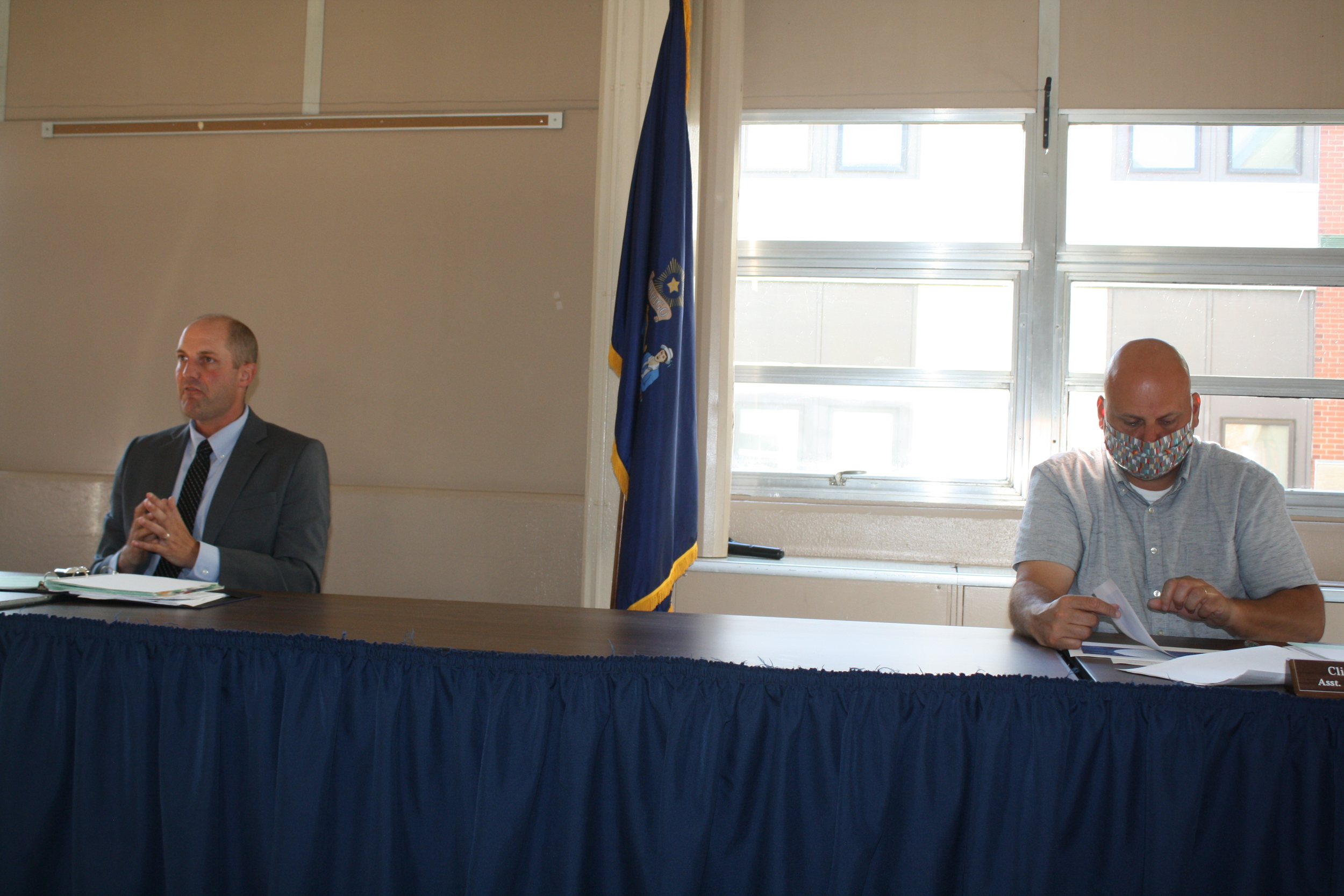
PRESQUE ISLE, Maine — The SAD 1 school board has unanimously approved a plan for the district’s fall reopening that currently anticipates a full-time return to classes, but with numerous social distancing and cleanliness guidelines and the possibility of utilizing remote learning when necessary.
Before the official vote, superintendent Ben Greenlaw gave a presentation that outlined the three major classroom formats that SAD 1 schools could potentially utilize, depending on local trends of COVID-19.
Due to the low number of confirmed COVID-19 cases in Aroostook County, SAD 1 will use a “Green Plan,” referring to full-time classes but with changes to promote student and staff wellness and safety.
If any of the district’s five communities — Presque Isle, Westfield, Mapleton, Chapman and Castle Hill — experience steady increases in confirmed cases, the district would enact the “Yellow Plan.” Students would spend 50 percent of their time taking in-person classes at school and 50 percent of the remaining time at home doing remote lessons.
The “Red Plan” would entail all students and staff taking part in full remote learning, as they did when the pandemic began in March, but only if the number of confirmed COVID-19 cases in the district’s area rose significantly. Teachers would have more organized plans in place for student participation and higher expectations for students than during the district’s “emergency learning” this past spring.
Greenlaw assured the relatively few attendees of the July 15 meeting that all parents will have the option to enroll their children in remote learning in August, if they feel that route is the safest. He noted that the district is in regular contact with area hospitals in order to monitor the pandemic situation.
“All three of these plans are dependent on the amount of community spread [of COVID-19],” Greenlaw said. “The biggest thing to know about the Yellow Plan is that it’s meant to be temporary and used when we’re in transition into a Red Plan or back to a Green Plan. We can’t sustain ourselves long-term with hybrid learning.”
When SAD 1 students return to classes — in mid August for high school students and early September for everyone else — they will experience many changes that will be similar across grade levels.
Classroom cohorts, referring to students in the same grades, will remain together throughout much of the day to avoid interactions with larger groups of students. Everyone will eat breakfast and lunch in their own classroom and each school will not use their cafeterias for those meals.
Greenlaw anticipates this set-up will be easier to implement at the district’s three elementary schools, where students typically stay with their grade level during classes.
“We’ll still have recess, art, music and physical education, but on the playground those 20 to 24 students who are in a cohort will have to play together,” Greenlaw said.
At the middle and high school levels, where students of different grade levels have more classes together, the number of transitions between classes will be reduced. Instead of taking seven classes to gain credits for an entire school year, SAD 1 will temporarily change to a semester-based system where students take four courses per semester for credits. Students will enroll in four classes that will last 80 minutes per day to reduce time walking to classes in the hallways.
Students will only be required to wear masks on buses, when arriving to school in the mornings and during transitions to classes. In classrooms, masks will be optional for both students and teachers, unless they are working closely together in labs or in small groups.
Greenlaw stated that the district has purchased masks, face shields and enough hand sanitizer machines for all classrooms and every student will be required to sanitize their hands when they walk into a room. The district has also purchased larger disinfectant spray machines to allow for quick cleanings of classrooms during the day and will place six-feet markers and arrows in hallways.
One challenge that has come up, though, is realizing that most classrooms do not have the capacity to space desks six feet apart for classes that anticipate larger groups of students. As an alternative, teachers will be able to use the cafeteria, gymnasium or auditorium to spread out students if necessary.
“We really did our best to space the desks six feet apart, but we could not adequately space them out and plan for a larger group of 20 to 24 students,” Greenlaw said. “In those rooms, desks will be at least three feet apart.”
Each SAD 1 bus will operate at 50 percent capacity, with 30 to 35 students allowed. Students will sit alone unless they are riding with family members and sit spaced out throughout the bus. Parents will have the option of bringing their children to school, if they have reliable access to transportation.
“We’re confident that we can operate our buses at that capacity and get all 1,700 students [in the SAD 1 district] to school on time every day,” Greenlaw said.
Philanthropist and Presque Isle native Mary Smith recently donated one of the buses that had been used on the now-defunct Presque Isle Loop to SAD 1. Greenlaw said that the district will renovate the bus to have front-facing seats and will eventually use the bus for field trips and athletic team trips, though not until the pandemic is over.
Greenlaw plans to send a letter to parents that lets them know of the reopening plans as well as a survey that will ask two major questions: Do parents feel comfortable sending their children to in-person classes and are they able to provide personal transportation. Those questions will give the district a better sense of how many students to expect and how to arrange classroom spaces.
For as long as the local pandemic numbers allow, Greenlaw stated, in-person learning remains the best option for students and educators.
“In-person is the best thing for students’ social and emotional wellbeing,” Greenlaw said. “We’ll need to be flexible and adaptable, but, for as long as it’s safe, we need to return to normal.”






